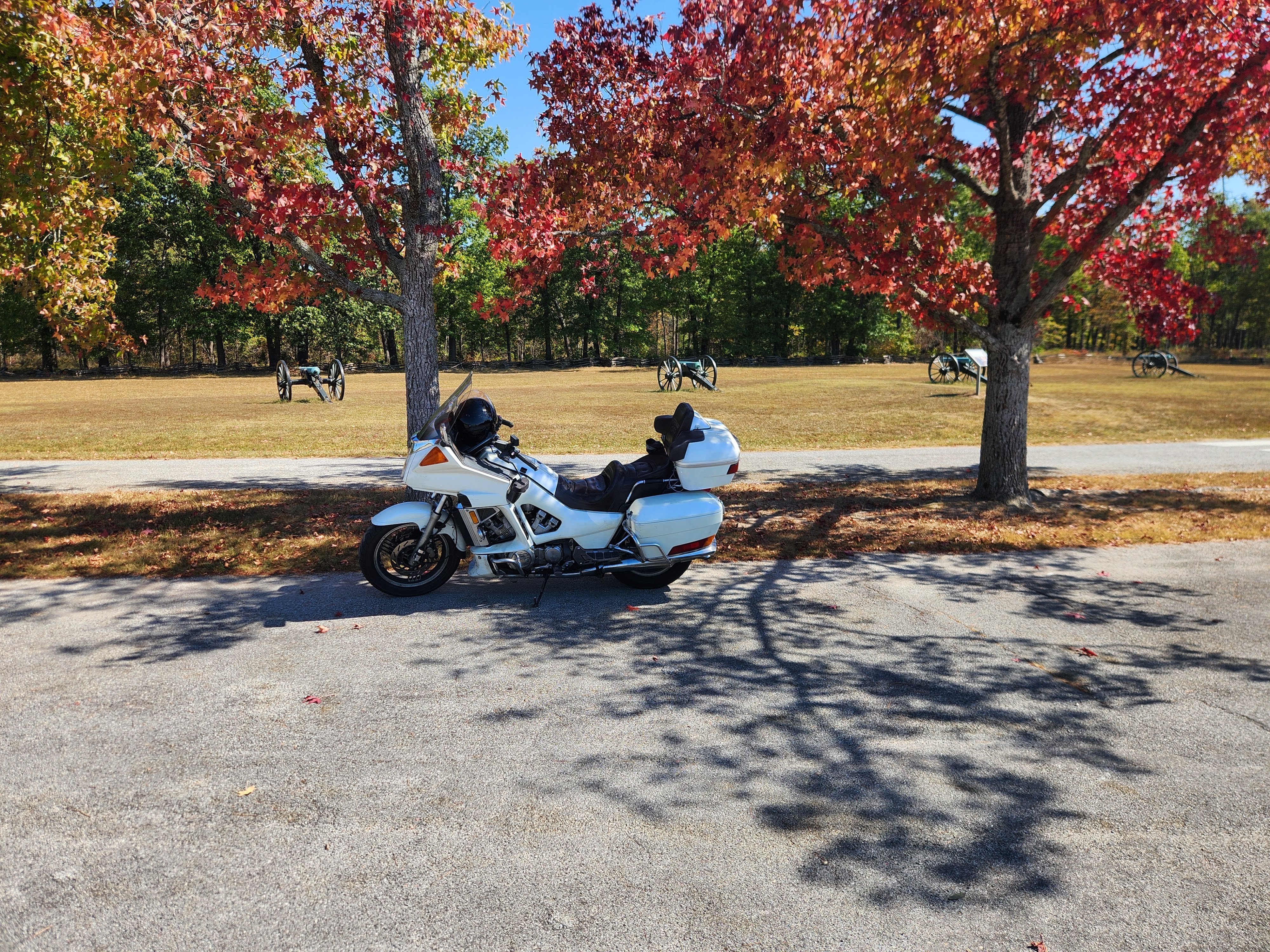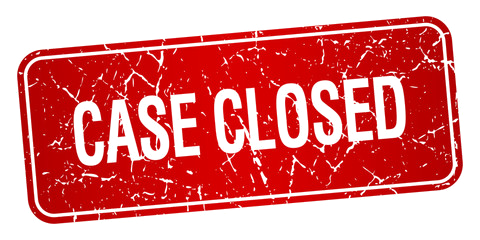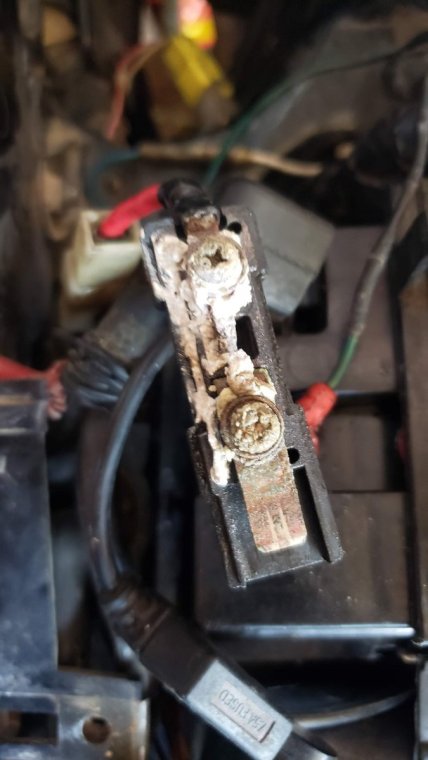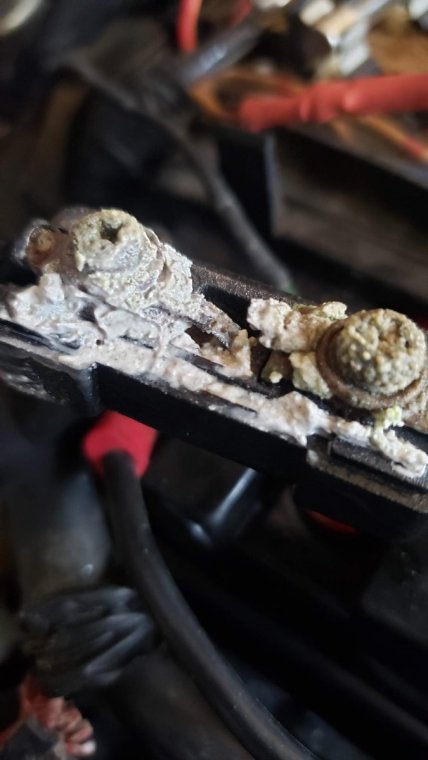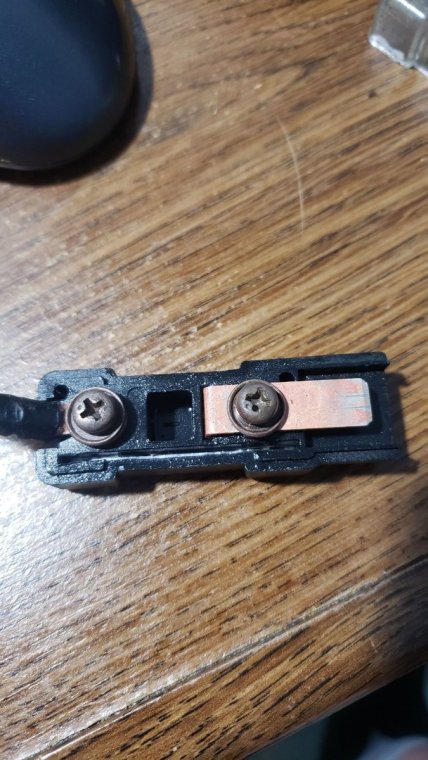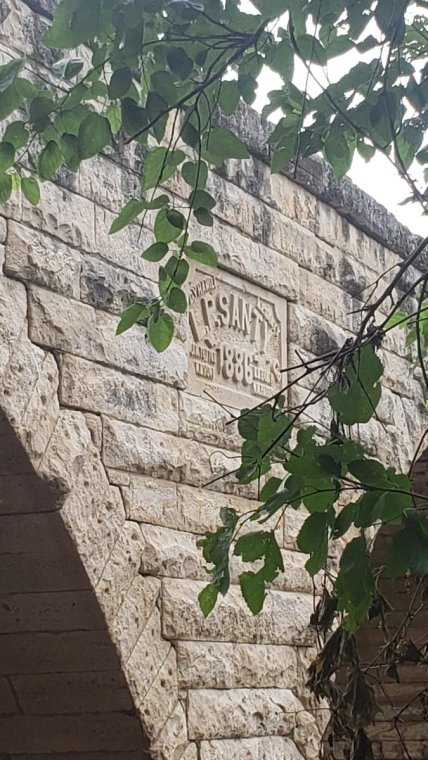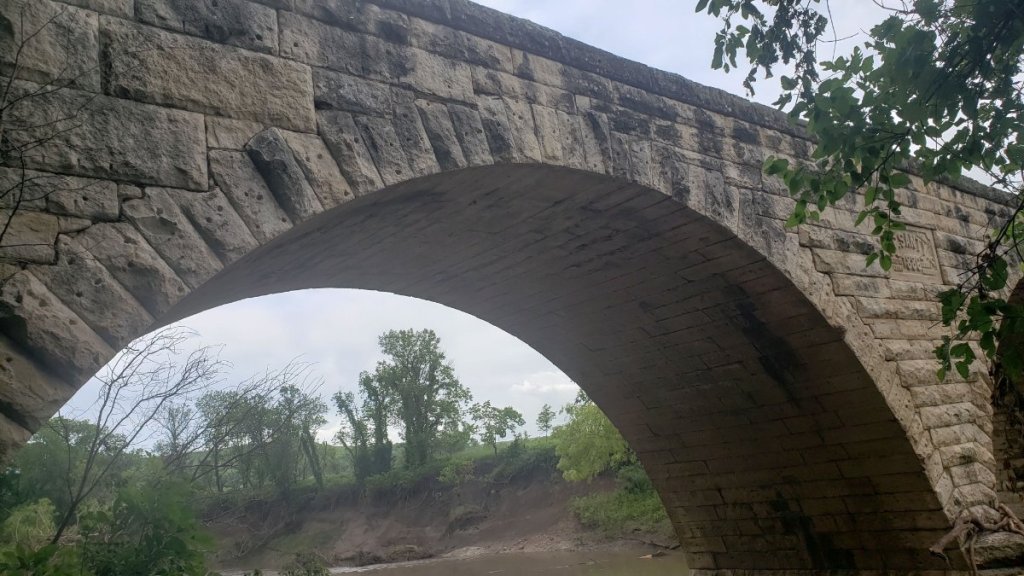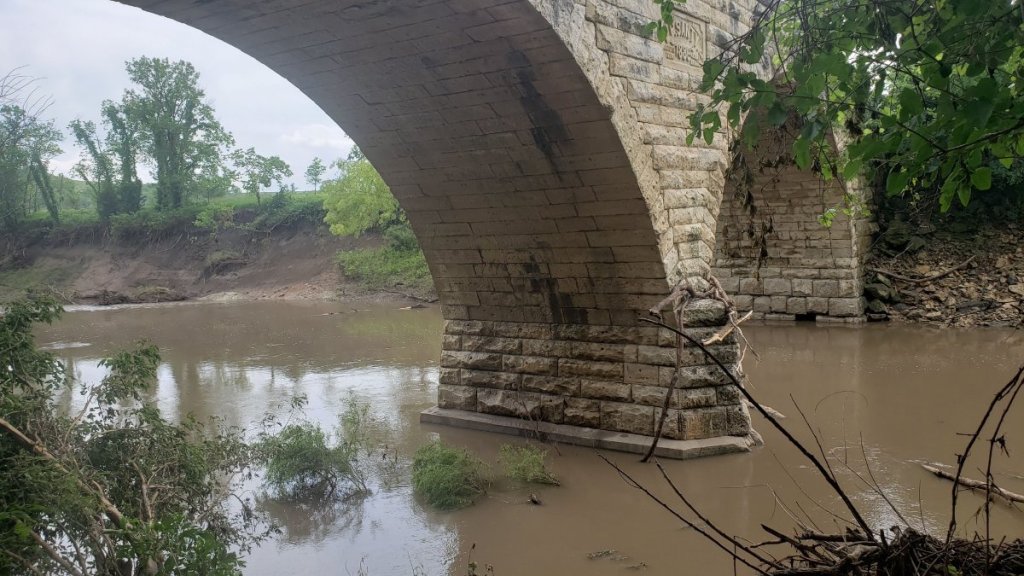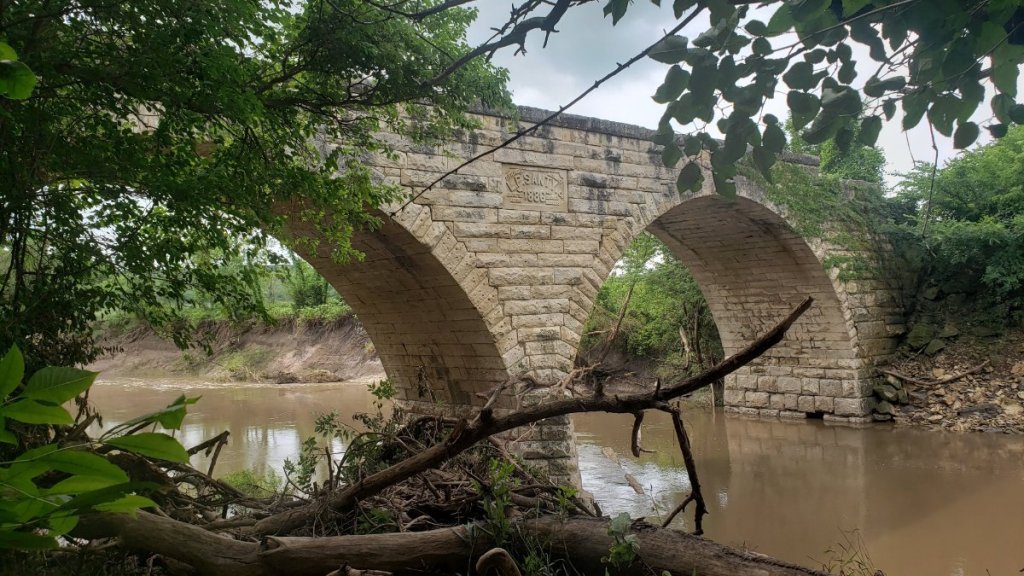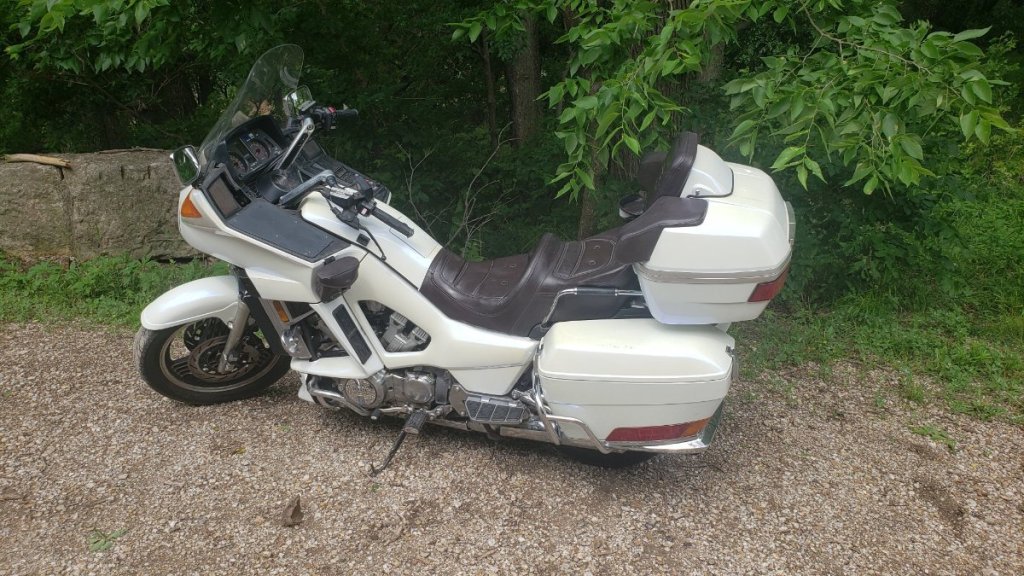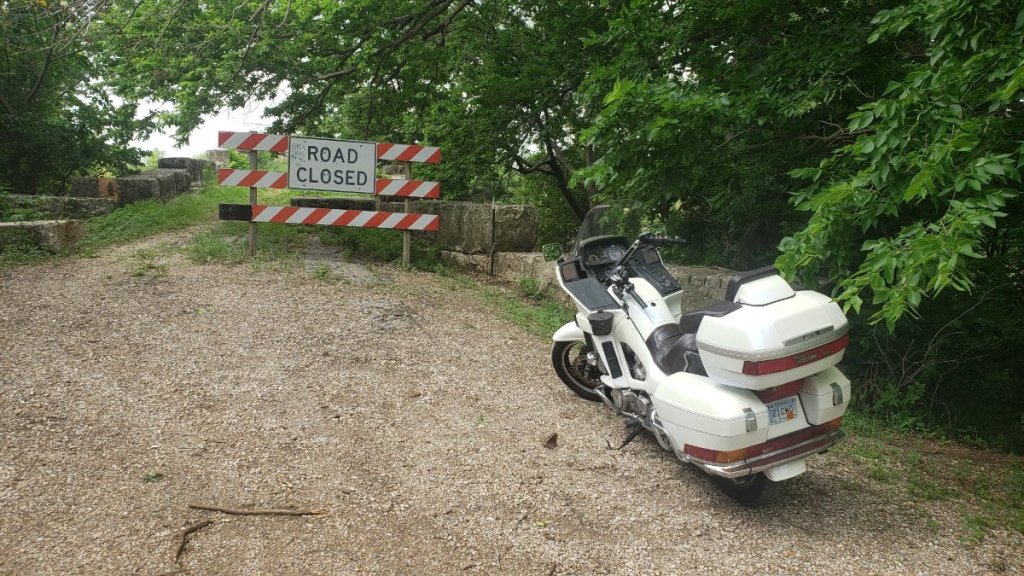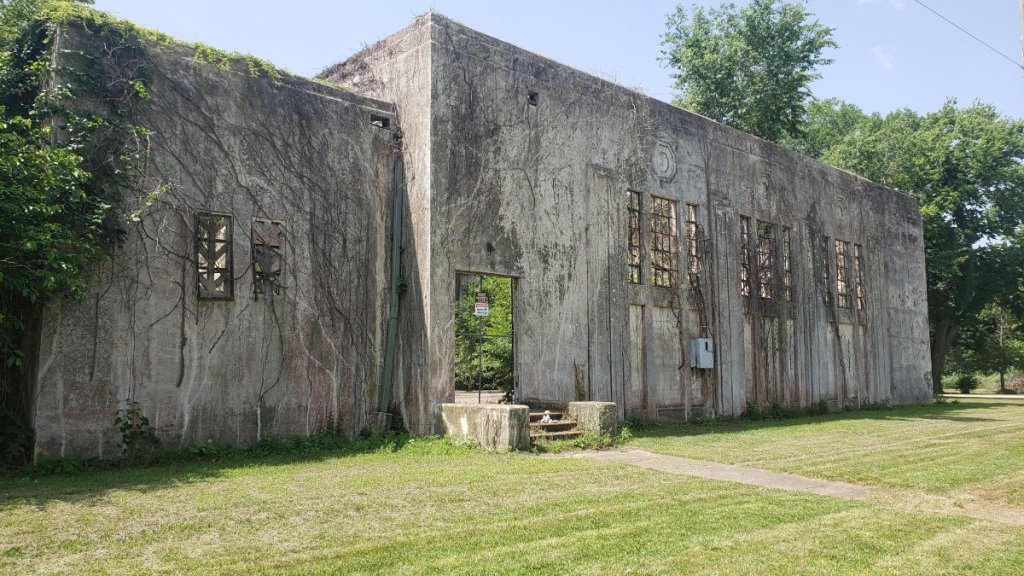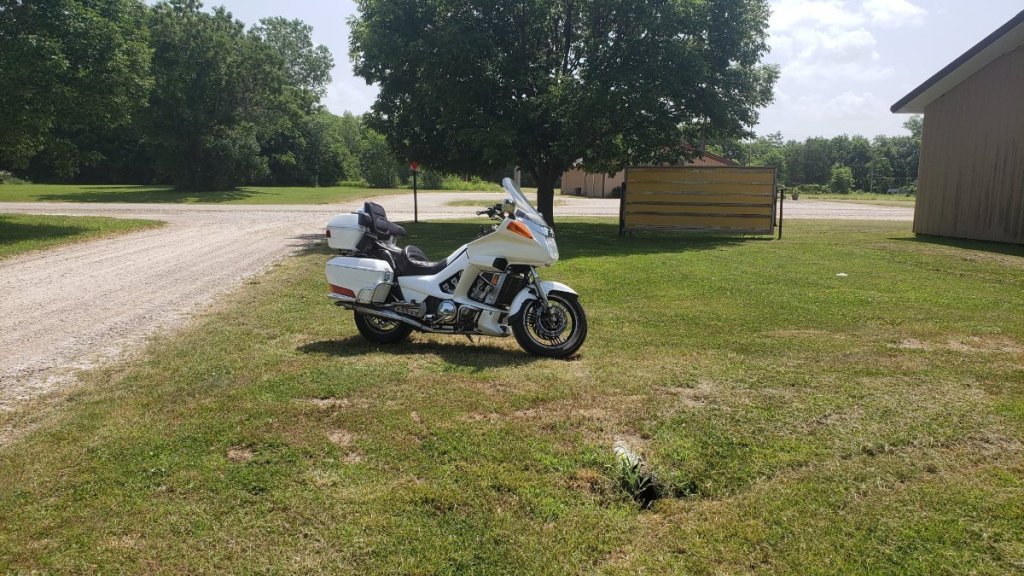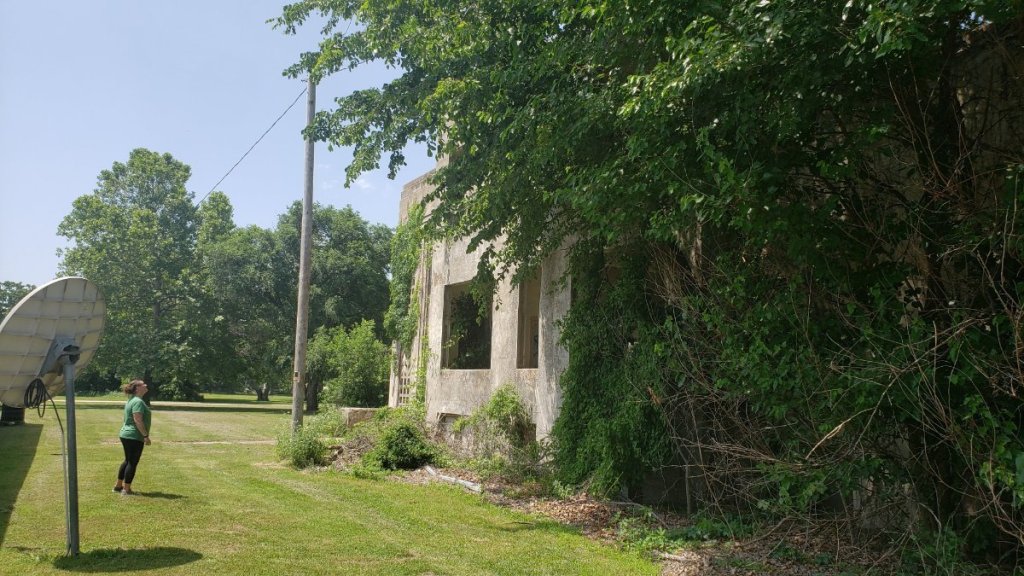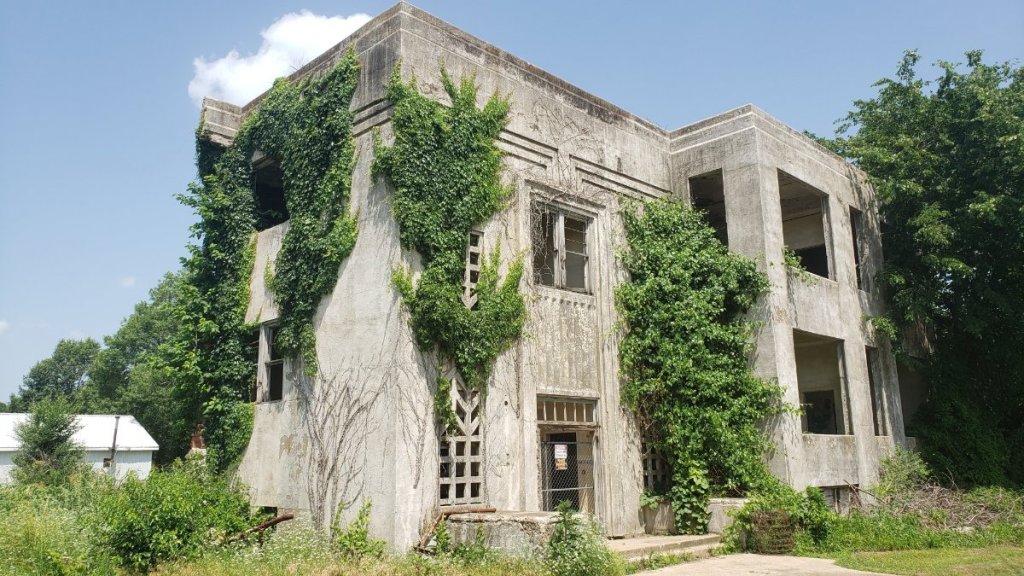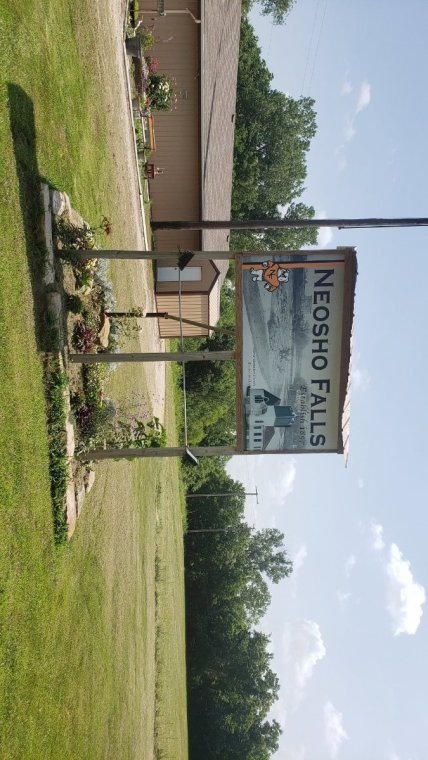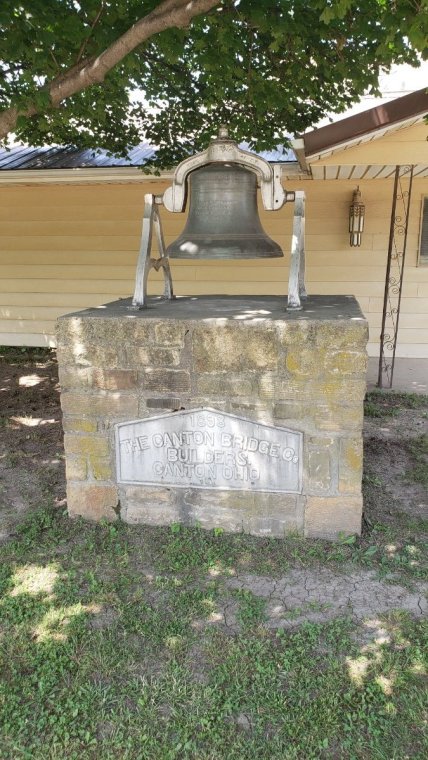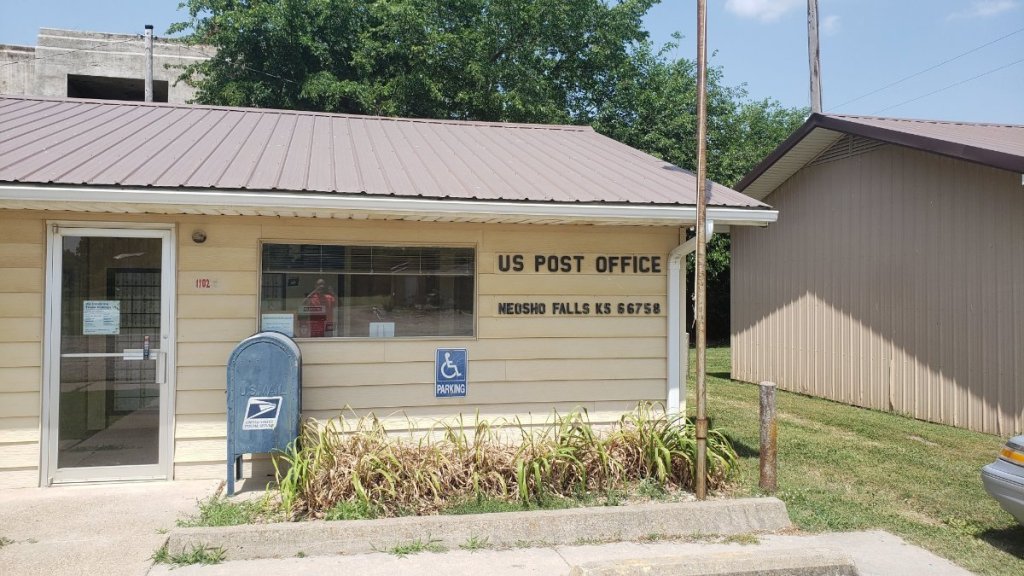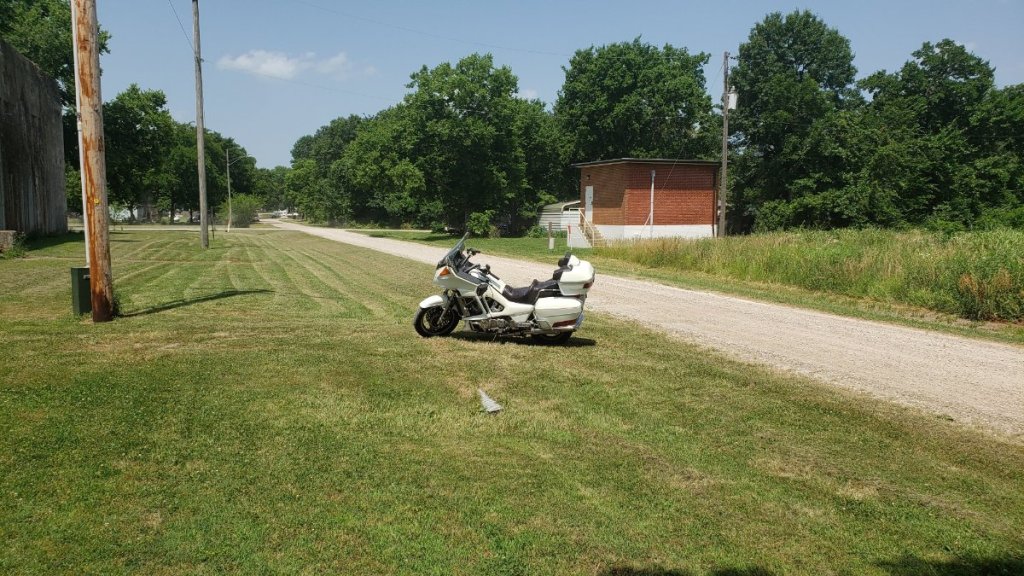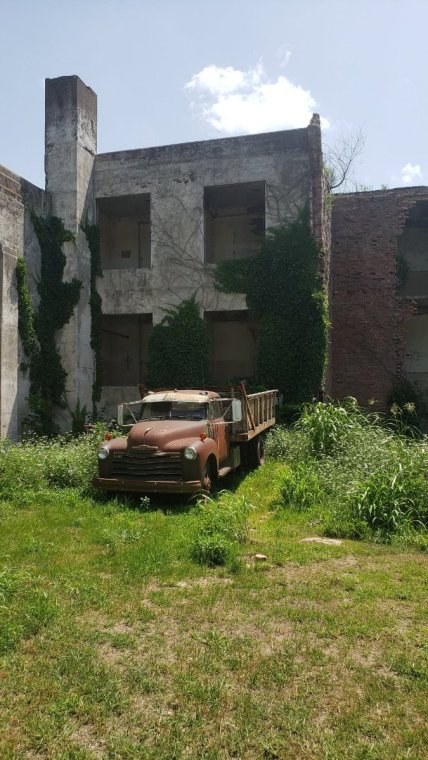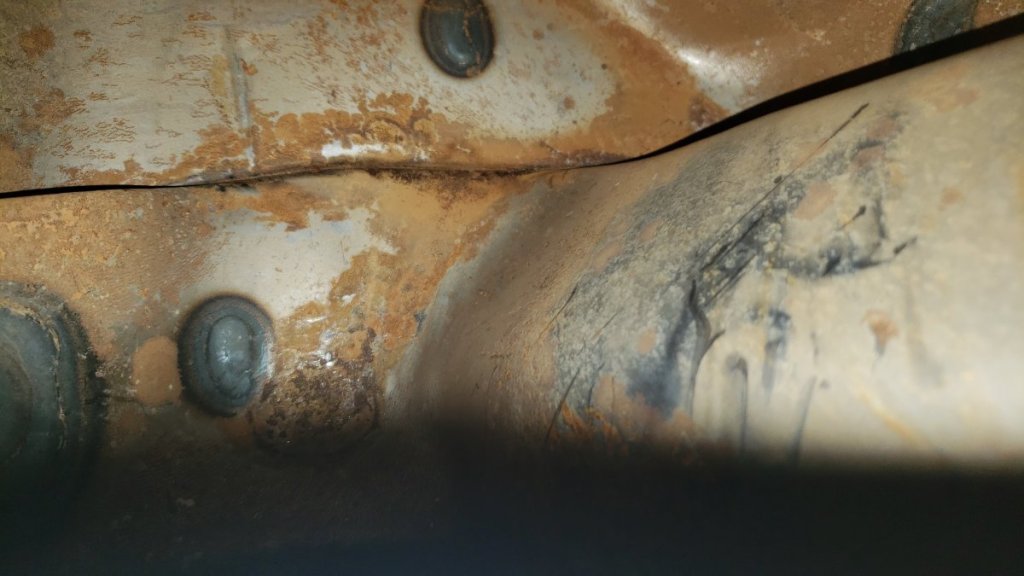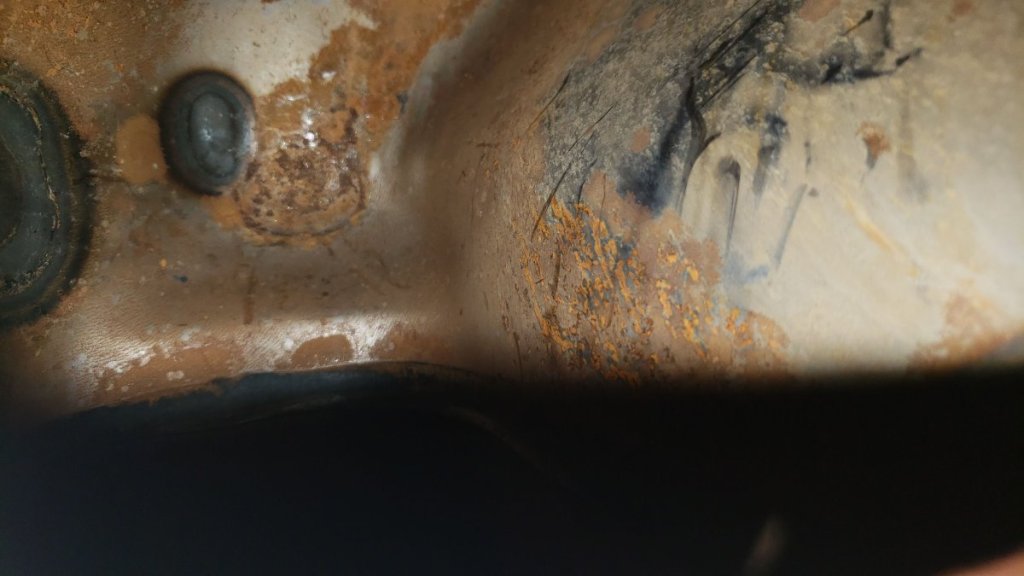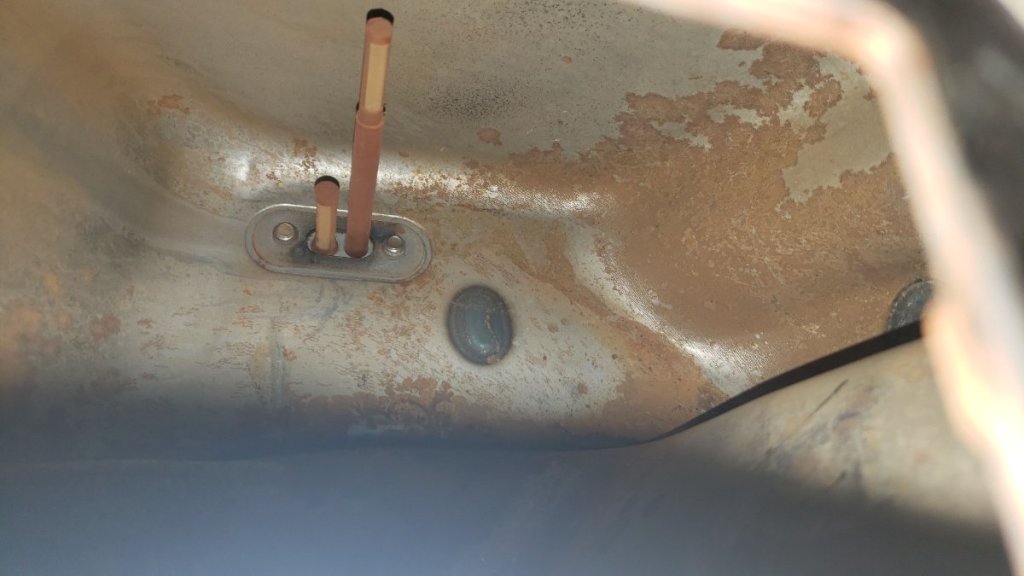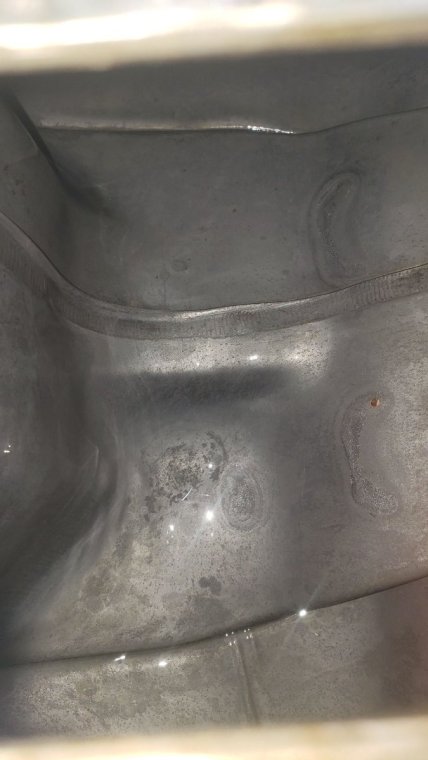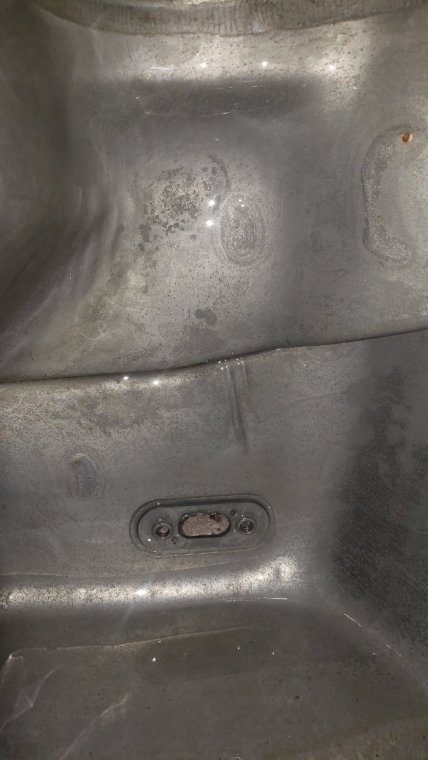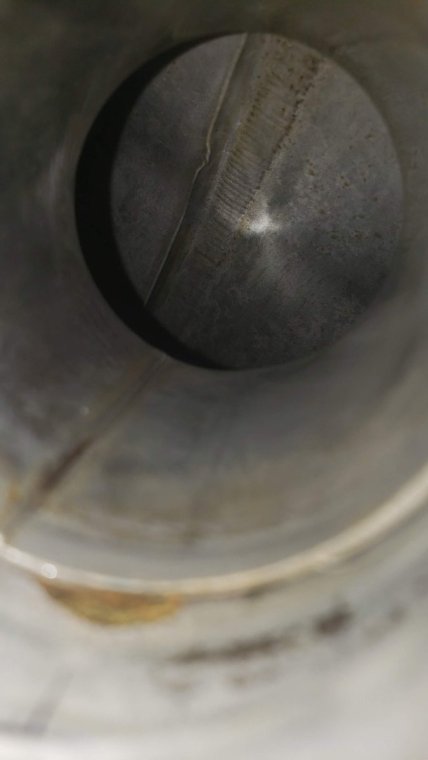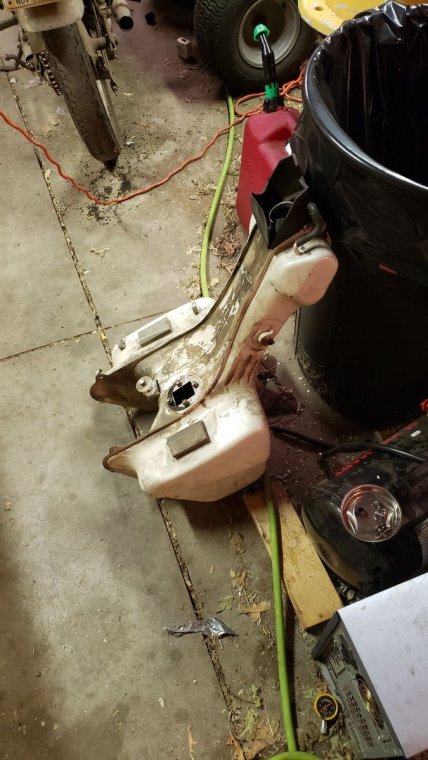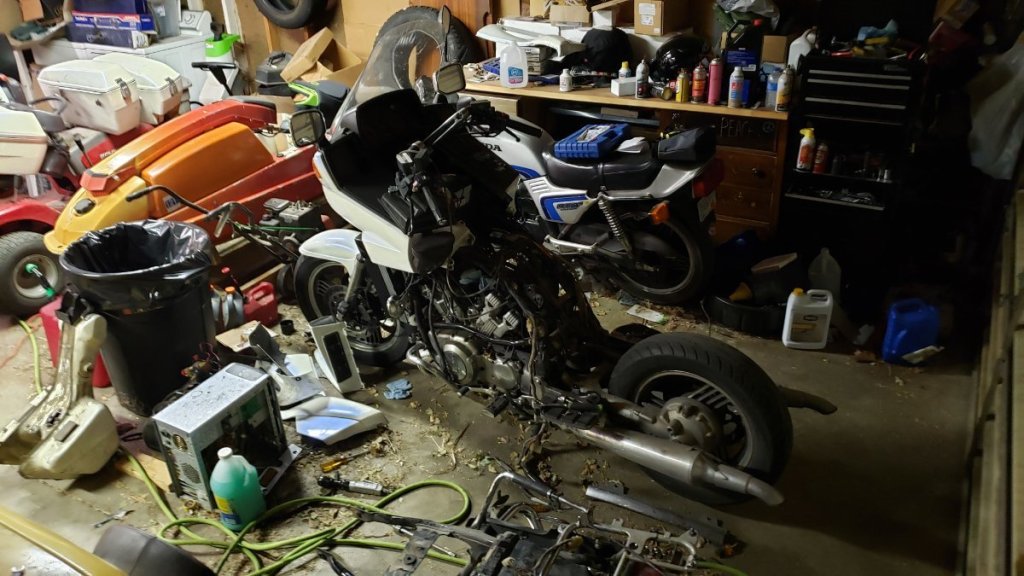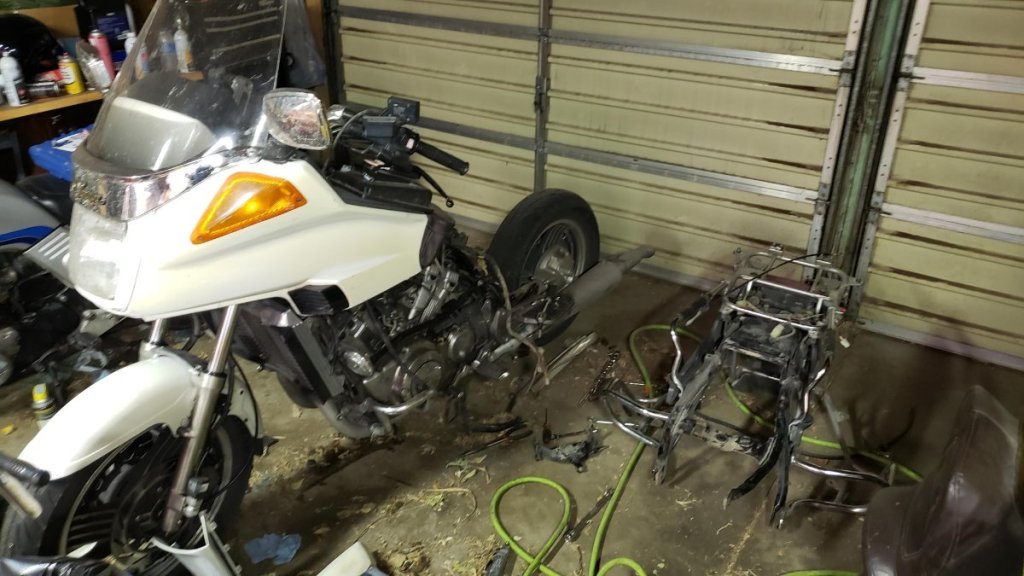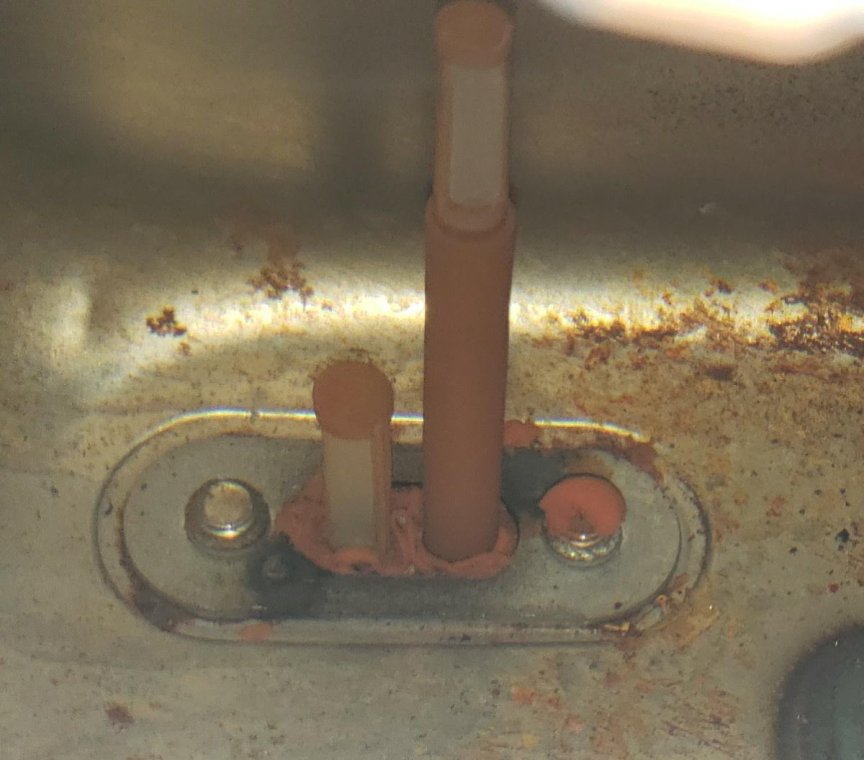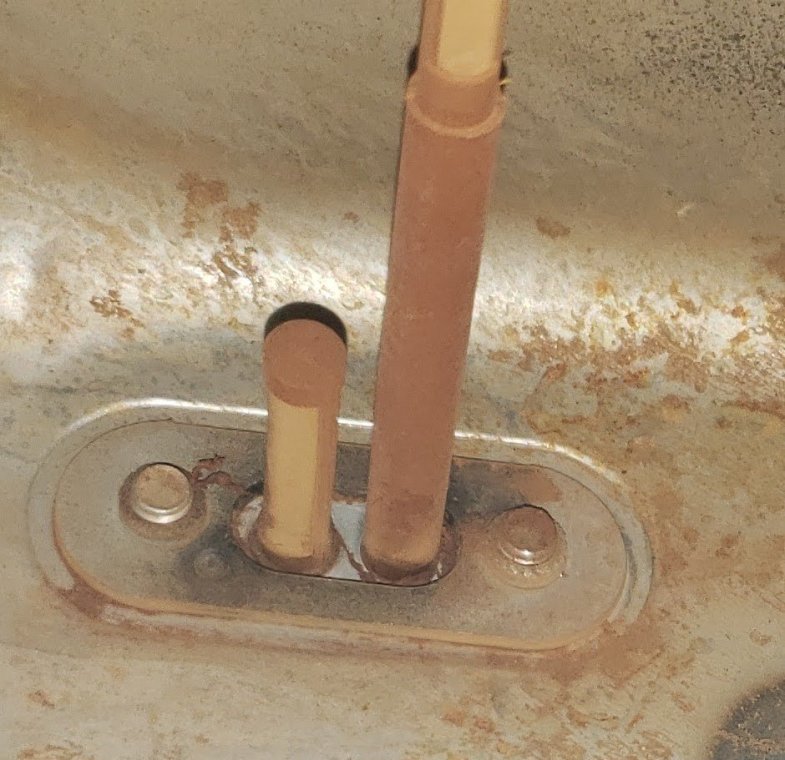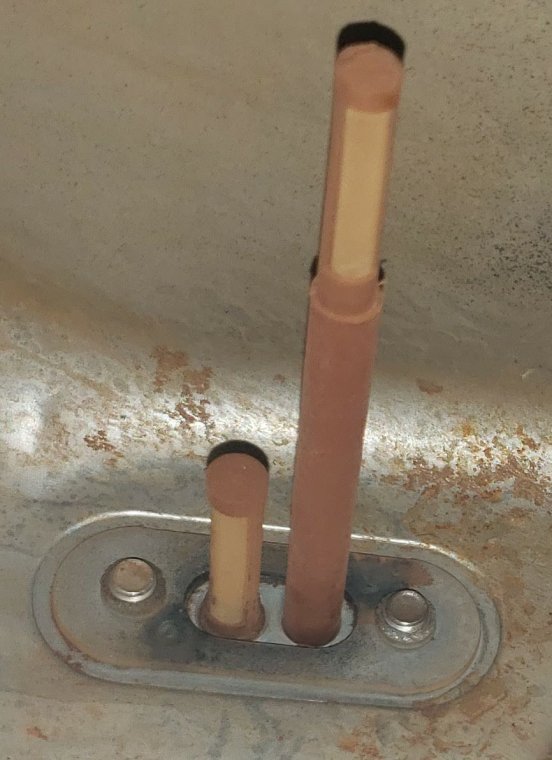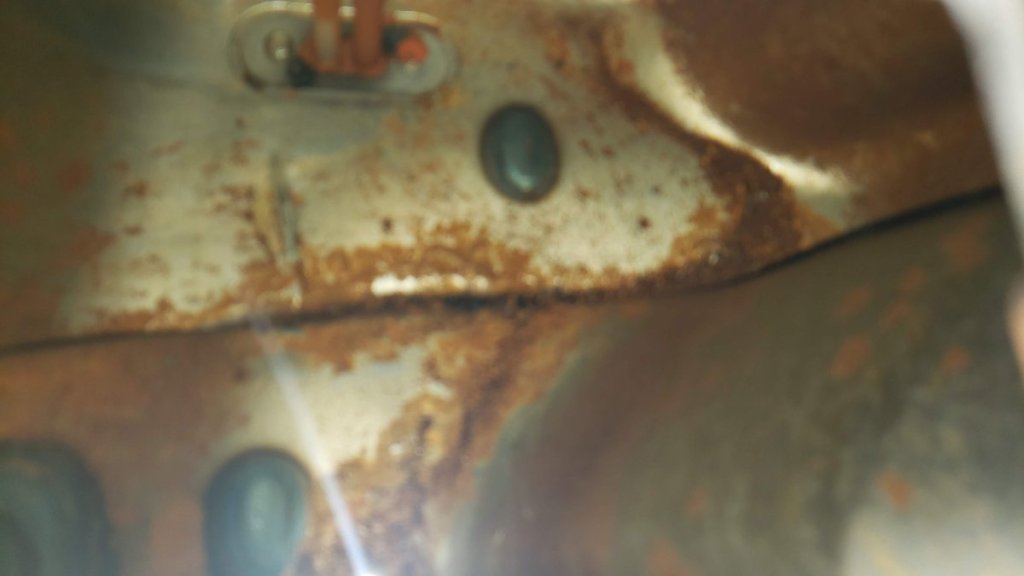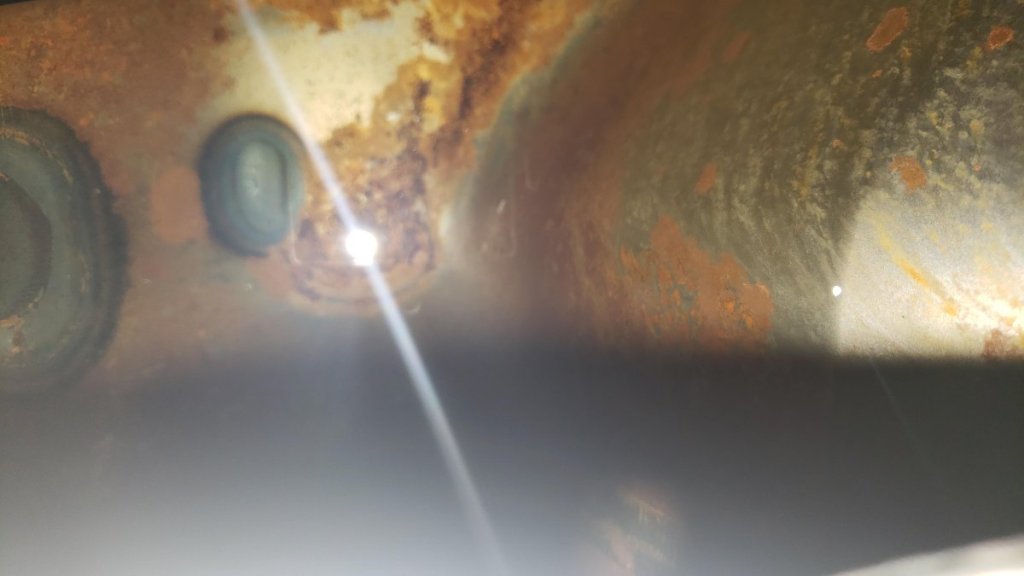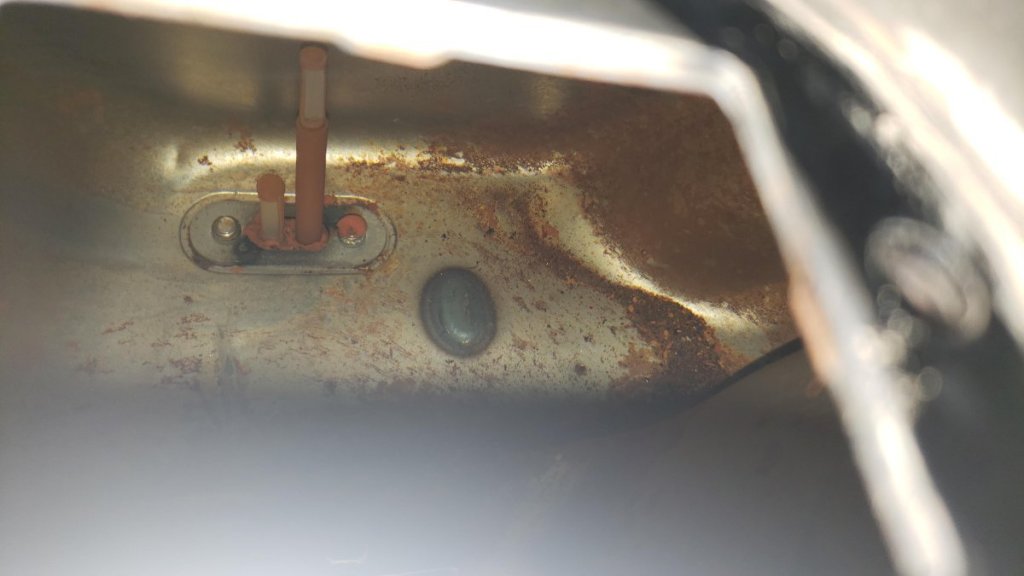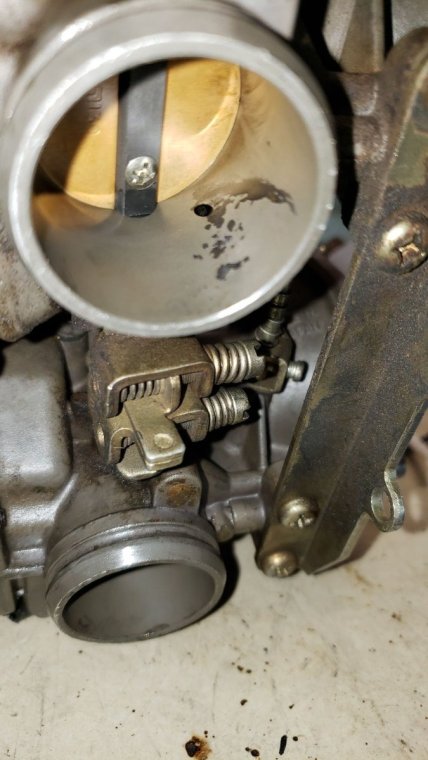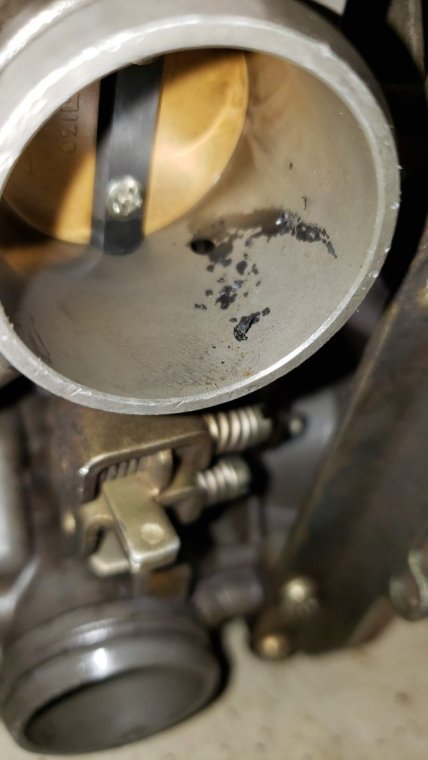-
Posts
76 -
Joined
-
Last visited
-
Days Won
1
Content Type
Profiles
Forums
Gallery
Events
Store
Everything posted by TTrax
-
An update... have driven the bike quite awhile now and the same issue hasn't come back so far. I still have a hiccup once in great while, usually when rolling on the throttle when the engine speed is around 2K RPM or less, I will let everyone know in case it becomes more persistent or leaves me stranded. Hopefully not, but will update either way. I am positive whatever carb issue was present before has been greatly diminished or resolved so I am going to call this issue resolved. So far I have ridden over 2K miles since the carbs have been gone over and still running strong. I appreciate the help and insight everyone has provided and will try to leave me 2 cents on issues I think I can help with for others that are having issues. I work in technical support for an agriculture manufacturer OEM so I know how frustrating it can be for persistent problems with older equipment and how much it helps getting insight from guys that have worked in the field for awhile. My wife and I just got back from a trip to where we had met and ironically, the bright spot in the trip was the ride itself. The bike did great except for the neutral light staying on during the ride back, the bike got rained on during the night, even though we supposedly had a zero percent chance of rain. I rode it to work today and during the trip back the neutral light finally went out except when it was actually in neutral. I am thinking water had gotten into a connector but if the problem comes back I will be checking again. I would much rather have the neutral light be on all the time rather than the neutral light be out all the time from what I have been seeing in the forums! Probably carbon tracking in a switch or connector or wire finding a power source where it shouldn't be from what I am seeing in the wiring diagram. If it comes back I might be making a new post but for now am enjoying riding this season compared to the last two and really appreciate the help along the way. Thanks again and hope everyone has a great riding season!
-
Thanks, I might have to do the same thing. I seen a fuse that was labeled as a mini ANL or something like that which was very similar. I figured some trimming might be required since the dimensions I can see where the fuse mounts up is 1.16" and mine is a little over 1".
-
I did run into a snag on Sunday. Last time I had posted, we had gotten back from the ride to Neosho Falls. On Sunday, we decided to go on a small trip. I turned on the key and had nothing, no lights, no fuel pump, it was as dead as a doornail. I checked the battery and it was at 12.7 volts so that wasn't the issue. I checked the main fuse box and all the fuses were dead when the key was turned on. I started working my way back from the battery and found the main 40 amp fuse had corroded to pieces. I don't know how I made it back without blowing it on the previous day. Someone was looking out for me for sure. Also, this might have been the cause of the hiccups every now and then I am thinking / hoping. I have ordered new fuses from Partzilla but they seem to be having trouble getting the order to me. I am thinking about finding something else that will serve the same function as this fuse in the near term. I really don't feel comfortable running without fused protection in this circuit.
-
Here are a few more from last weekend, not as long of a drive but here is an old stone bridge. Our history here in Kansas isn't too old, so 1886 wasn't too shabby since a lot of small towns were getting developed in the late 1870's to the early to mid 1880's due to railroads being built all over the place.
-
Yes, the plastic shields are still in place. The coil-over-plugs takes up a lot more space that the wires or caps on the plugs would have but are still present. This morning we decided to take a drive to Neosho Falls, which is a little ways away. There is an old abandoned school house that my wife really likes and we decided to head out on the bike. Right as we were taking off in town, I had an instance of one hiccup after going over some rail road tracks. We ended up having to go back to the house for unforeseen reasons. While the bike was there, I took the connectors apart for the TCI and worked them back and forth several times. I also cycled the emergency stop switch about 5-10 times back and forth. We took off again for a 250-300 mile ride and it never hiccupped again the whole time. I am thinking it was either the TCI connectors, the stop switch, or the fuel I was using. There are a couple of gas stations in town with lower cost fuel but now I am wondering if they are peddling E15 and not E10 like most stations are. When the hiccup happened this morning, the bike was relatively cool so I am thinking that the problem was electrical in nature. Still I don't think I will getting fuel from that station anymore as an extra precaution. I guess I will have to keep riding to see if the problem comes back or not. I am hoping it has been fixed, as of now I have put about 1,300 miles on it since putting it back together this year. Hopefully things will keep looking up but will update one way or another. Hoping you all are having a great weekend! Here are a few pictures I took...
-
I had this happen to me with cable routing last year, after one of the many times I had the carbs off. When the engine was cold, I didn't have any sticking. When it warmed up, the throttle wanted to stick. What had happened was a couple of cables (choke and one of the push pull throttle cables) had been twisted in a loose helix shape around each other. I didn't think that this was enough to cause the problem but when I routed the cables so they were all parallel to each other, the problem went away.
-
Well, I have gotten nearly 1000 miles on it with no real issues, hoping that it is resolved. I did notice yesterday, I had a couple of hiccups when driving in town at slow speeds and the engine was warm enough to kick the cooling fan on. First time was when I was riding at lunch in a small town near work. Just one miss or sputter as I was accelerating at low engine speeds. I drove on back to the town I work in which was about 5 miles away. I got back down to driving slowly through town and it did it again, same situation. I cycled the emergency stop switch to make sure it wasn't getting flaky. That evening, I drove back home and was on higher speed roads for the most part. I did end up driving slowly while in town, the high was somewhere between 98 and 100 degrees. It never hiccupped at all during this trip. When I got to the house, I went ahead and took off the left side cover to check out my fuel filters. The one between the tank and pump was half full, but this seems to be normal for it. I could see fuel flowing from one side to the other. The one I have installed between the tank and the carbs was different, I was seeing on average about 1 or 2 bubbles every couple of seconds or so. Wondering if when the outside temps are very high and engine is pretty warm if I am getting the beginnings of vapor lock. Never seems to happen when driving at highway speeds. My wife and I are going to take it for a fairly long ride tomorrow, so we will see what happens. Really hoping the same problem I have been having isn't coming back. So far this feels totally different, and it seems I remember it happening before I had all these carb problems this last year. It always seems to happen on hot days and at higher engine temperatures. I guess another possibility is that one of the pick up coils for the ignition is getting flaky but I guess to test that theory I would need to replicate the environment in which the problem seems to happen and check resistances then. When cool, it seems that they resistance is right on what the factory spec is. I will update if something else changes or the problem comes back.
-
So far, nothing new to report. I had tried to take it out for some significant riding this weekend but the weather hasn't been cooperating since. I drove about 35 miles on Friday and a little over 60 miles on Sunday. My wife got cold during the ride so we turned around and came back. I have been obsessing over any little irregularity and trying to determine if the engine is running worse or the same as it was when I put it all back together again. So far the engine running hasn't changed since I put the carbs back on, but I don't think I have enough mileage under my belt to start to relax yet. The weather this weekend is supposed to be better so will be putting some more miles on it at this time. I'm trying to mentally prepare for the possibility of the issue coming back, but I can't really think of much else that could cause the problem. The tank has been acid washed and the fuel system between the tank and carbs has been completely replaced (new fuel lines, new fuel pump, filter before and after the pump). One thing I am checking for is other possible places that fuel interfaces with the carbs other than the obvious places such as the fuel jets and enrichment circuit. I am looking at the service manual diagram of the carbs but don't see where the fuel from the enrichment circuit is released into the intake. Does it go to the pilot jet hole in the carb body or some other place? Also am wondering if it is possible fuel can get into the area where the adjustment screw for the air adjustment is? Hopefully I am just being overly cautious and the problem won't come back. I am just trying to get a plan going in case it does. I don't think that the air adjustment has ever been touched as the plugs are still in place. Just for reference, I am attaching a short video of it running. Idle is a little lumpy but has been that way for as long as I have owned the bike. Not sure if this is common or not, but as long as it doesn't change drastically I am fine with it. 20220522_205647.mp4
-
Well I just got back from a ride after syncing the carbs, runs great so far. I will need to put the bodywork back on, Only time will tell if it is really fixed. Usually it runs great for a few hundred miles after taking the carbs apart and cleaning them. I will try to provide an update if I get over 500 miles with no issues. Really hoping for a good outcome because I am tired of tearing this thing apart. The only issues I can think of that might have been happening is the sealant I used to install the fitting on the fuel pump and the previous owners use of orange RTV to seal the petcock to the tank. When I took the old pump apart for inspection, I removed the fitting and some of the sealant I had used broke off in a piece. I sprayed some carb cleaner with acetone on it and it dissolved in a matter of seconds. Also, when removing the orange RTV on the petcock, it was difficult to remove. I sprayed some of the same carb cleaner on the RTV and while it didn't dissolve immediately, it sure let go of the metal pretty quick. Hoping this is what was causing the issue because I have eliminated both of those sources now. Thanks again for all the suggestions and encouragement so far. Hopefully this will be the end of the problems but I will let you all know either way.
-
OK, it's been awhile since I had updated my progress... mostly because there hasn't been much progress. I did finally do some research into cleaning the rust out of the fuel tank. I had bought a tank liner kit (Kreem), but after reading a lot of negative reviews, I decided I would forgo doing it for now. I finally decided to go with muriatic acid. After using a gallon undiluted, I made sure to agitate the tank around off and on for about 2 hours. Afterwards I neutralized and rinsed with water and baking soda. After I got most of the water out of the tank, I poured some alcohol in the tank and drained it too so I could get most all of the water out as possible. That was followed up with a leaf blower in the opening for the fuel sender for about 10 minutes. Finally, I followed up with a good coating of WD-40 and drained the excess out. Hopefully this will last for awhile, now to start getting it put back together again. The weather here is already nice and been driving me nuts listening to everyone driving around on their bikes. At least I still have the trusty old CB750 to ride around on but its just not the same. Hopefully this does the trick, my wife has already said if it doesn't its probably time to get rid of the Venture. I attached some before and after pictures, so far it looks like it did a decent job.
-
Just a quick update... decided to go ahead and drag myself out to the garage today and decide how I wanted to proceed. After much looking at the bike and trying to see how much work it was going to take to get the tank out, I started taking it apart in earnest. It wasn't as bad as I thought it was going to be. I took the luggage cases off the bike, took out the air system, and unplugged any wiring harness connectors I needed to so I could get the frame off the back of the bike. I did find the top left frame bolt was missing so that was concerning for sure. Now just to see if I have someone relatively local that cleans out tanks and treats them, or decide if I want to try to do this on my own. Pardon the mess in the garage, I didn't get it properly cleaned out and took these photos before putting up my tools that were strewn about the work area, along with leaves that had blown in yesterday when loading up some stuff.
-
OK just a quick update, still working on this issue. Slowly but surely. I did notice something strange but maybe of no consequence but figured it would be worth noting. The first photo I had shared awhile back. It didn't mention anything about it as it looked to me as if someone had applied a lot of sealant quite sloppily between the petcock and the tank. I didn't think more about it until I had dried out the tank with a heater and blew it our with compressed air. The next picture was after blowing out the tank, and the last was after blowing it out specifically in the area of the petcock. What I thought was orange sealant seems to have been rust but of a bright orange color which I haven't commonly come across. Possibly rust in the presence of water? I'm not sure, also not sure if this was causing my problem or not. Seems like rust would have stained the fuel filters and the fuel bowls of the carbs but I can't say I know for sure. The filters and bowl are clean for the most part. For now there are no loose rust particles in the tank. I have considered removing the tank but not sure how much it would take to get it out. Looks like it would be a lot of work but might be worth it in the long run. I might see if there is anyone local that would perform a rust removal and nickel coat a tank if possible. I have heard horror stories of people using a tank liner and having it flake off and plug up fuel filters, so I am hesitant to do it unless it is absolutely necessary.
-
I would like to think not since it was brand new Gates hose installed a couple of months ago. Regardless, I will be changing them again asking with another fuel pump just to be sure. Planning on at least cleaning the tank if not removing it and derusting it before sending fuel to the carbs. I appreciate everyone's thoughts and suggestions on this and hope to have it back to road tripping this next riding season!
-
I have the Ignitech box on this with cop's instead of the factory coils and wires. I do have a new set of spark plugs I'm going to be installing soon just in case. Don't think that is the problem but we'll see. Strange how I can blow out the jets and passages and it runs like a dream for awhile then happens again. Filters look as clean as when I installed them. One installed between the tank and pump and the other between the pump and carbs. Mike said that the carb floats were set to the wrong height, too high. Also said the wrong metering needles were installed. Not sure if that would cause my problems but glad to have it back to the right settings I think.
-
I have to admit, I have thought about selling this thing know than once over the past couple of months. Hopefully I will be able to get this figured out and fixed this time around. I got my carbs back from Mike and want to make sure everything is okay. I've got a new fuel pump and lines as well as filters. If I'm going to do the tank, does anyone know what's involved to remove it? I had heard you basically have to split the rear frame off but correct me if this is wrong. I hadn't thought about removing the tank and relining it as my 82 Honda is way worse and I haven't been having any similar issues as what I'm having here. Also, my screens in the tank and fuel filters are perfectly clean with no hint of rust discoloration. Did these tanks have any sort of liner applied at the factory? This tank has some rust but I don't see any evidence of a liner ever being there in the first place, unless it has dissolved over the years. I would think there would be flakes of debris other than rust in the tank if that were the case but can't see anything so far.
-
You are right, I missed the third hole until I shot some carb cleaner in the mating hole that the pilot jet lines up with from the jet block. I went ahead and sent the carbs out to Mike Eykamp in hopes that he will find out what I have been missing. Since I haven't been performing a true carb tear down and rebuild then the issue is probably with my halfassed attemps at focusing on the fuel part of the carb only. I did take out the fuel sender and looked into the tank, doesn't look too bad for a +30 year old bike in my opinion. Nothing I can see that would explain the carb getting gummed up after several hundred miles. I plan on replacing the fuel lines and pump again just to be sure.
-
Wonder what the heck this stuff is. Coming out of the smaller of the two holes on the engine side of the throttle plate. When scratched with a pick it comes off and seems rubbery in composition. Anyone ever see anything like this?
-
I might give it a shot, I have Seafoam in it right now but might try some of the others. My concern is that it isn't gum or varnish getting into the carb jets and passages but debris shedding from some parts of the carb that might have been damaged or dissolved by the B12. I will definitely give that a shot to see what happens.
-
This time I had ordered Gates fuel hose and installed it. The wall thickness appears to be fairly thick and it is braided as well. The original hose I had installed a few months ago was from O'reillys and was some unknown brand. When I changed it out this time (only a couple of months later), it was very hard compared to some I had left over. I am pretty sure the B12 I had been using had done something to that hose, it felt like fuel hose that was out of something that was 20 years old. I don't know why, but I can get 200-500 miles out of the bike no problem before it starts doing this again. I clean out the carb with compressed air and cleaner and I can get another 200-500 miles out of it. I can't see any debris in the fuel bowl when I clean it out. It isn't a complete plugging, the engine will idle and have a miss intermittently. Its like something is starting to build up over time. It just seems that it has to be something inside the carbs themselves since I have a fuel filter right at the inlet of the carbs.
-
Well, I hate to say it but this issue is still ongoing. The original issue with the cut out at 5K RPM has been resolved but somewhere along the way I made myself some more problems. The last time I had mentioned having issues was on the trip back from Arkansas. I did take the carbs apart and cleaned the jets. All seemed well for awhile but then the problem came back, almost the same. Engine would surge at highway speeds. By the next day, you would have much popping and backfiring through the carbs at lower speeds. I once again took the carbs apart to clean them, blowing back through the jets and also through the needle valve seat with carb cleaner and compressed air. I also replaced the fuel lines and fuel filters. Instead of only running one filter at the inlet of the fuel pump, I installed another one right at the carb in case junk was shedding off the pump and getting into the carbs. I had high hopes of getting it resolved but I can't seem to avoid the same thing from happening. I estimate in about 200-500 miles the same thing happens again. I think I have had the carbs off 4 times now with this same issue. There is definitely something to be said for completely rebuilding something instead of trying to hone in on one part of the carburetor. At this point I have to think there is some material shedding somewhere internally in the carbs. I have replaced the rubber plugs in the jet block and the gaskets between the jet block and carb body. I am trying to think of some other areas that might be contributing debris. One I can think of is the floats themselves. I didn't notice that they were flaking off but wonder if they could be causing problems. I'm sure this is all self inflicted as I had left B12 Chemtool additive in the tank for about 2 months time. The other possible place might be in the enrichment circuit. I'm not sure how it is integrated with the rest of the carb. Does it work with the pilot jet for fuel or is it stand alone and gets its fuel from a different supply? I have started to honestly consider going to a single carb conversion. I had seen a couple of options on Ebay, one used a double barrel Webber carb and the other used a carb off a VW 1600cc engine. At this point I would jump on it but not sure how much fabrication would be involved, such as having to install a new throttle cable set up to run the carb. If anyone has experience with one of these, I would love to hear some specifics on the installation and additional fabrication that has to be done. If anyone has had a similar experience with the factory carbs and seeming to plug themselves up, I would also like to hear of what was found or if there is a common source that might be causing issues with the carbs being plugged up. Sorry to be asking so many questions, I was really hoping to have this all done with and resolved but I can't seem to get this figured out easily. Here's to hoping the next time I turn wrenches on this thing will be the last for awhile.
-
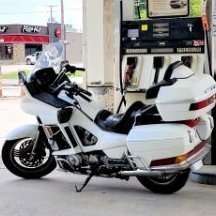
Carb installation
TTrax replied to Pasta Burner's topic in Venture and Venture Royale Tech Talk ('83 - '93)
I replaced mine recently and noticed the difference in the numbers too, but they all worked out. Like @saddlebum mentioned, I think they are mold or batch numbers. Mine worked out fine even though the numbers cast into the boots didn't seem to make any sense to the orientation. I had bought mine from eBay and they were Tourmaster branded. -
Thanks, all fuel lines have been replaced with new ones a couple months ago. I am hoping that won't be an issue for awhile. I might make replacing them part of normal maintenance in the future with what you mentioned in mind.
-
Today was spent working on the bike. I got the carbs out and started with the one I thought was causing the problem, carb on #1 cylinder. I checked the pilot jet and I could see light through it but it was dim. After spraying carb cleaner and compressed air, it seemed a light brighter when checked again. I went ahead and replaced all rubber components with what I had on hand. This included the o-ring around the jet tube and the gasket between the jet block and carb body. I also replaced the rubber plugs at the bottom of the jet block. I can confirm for sure that B12 chemtool will swell old rubber to some degree. The original rubber plugs were sealing well. I won't say they were the most supple rubber I have ever seen but they would seal against the bore of the block whereas originally they were like chalk pieces and would fall right out. I didn't trust that they wouldn't start disintegrating so they were slated for replacement. After I replaced the rubber components I went ahead and blew everything out with compressed air and carb cleaner (on all four carbs). After I put it all back together, I ran a carb sync and when the bike had warmed up, the rough running and missing was gone. I finished putting it back together and took it for a test drive and confirmed, at least for now, everything is working as intended (God willing it will be okay in the future for awhile as well!) No backfiring through the carb at low loads and would blast to high speeds on the interstate easily. I ran the tank with the remaining B12 down to 2 bars on the gauge and refilled with fresh gasoline with no additives. I know there is still some B12 in there but should be diluted and plan on taking a longer ride tomorrow and run several tanks of clean gas through it. I still can't confirm what was blocking the pilot jet, it wasn't totally blocked off which could also be confirmed that the bike didn't have a dead miss and I could see light from it. Frankly, it scares the hell out of me since I had a new filter installed when I did the new fuel pump. I can only imagine that the contamination originated somewhere between the filter and the pilot jet. I'm not sure if bad gas can pass contaminants past a filter that can coalesce into a jet and restrict it. It is also possible some varnish that cut loose off the carb bowl or some other contamination from a fuel line got in there. Really hoping I don't have to do this again for awhile but getting to where I can get it done in a day at a leisurely pace. I will update further if I have other problems, but praying this baby has been put to bed. Thanks for all the help and suggestions, have a great weekend!
-
I agree, I knew that it isn't ideal to use this stuff long term. Was hoping it would hold out the rest of the riding season but wouldn't be surprised to find some granulated rubber or debris getting into the jets. I have a new fuel filter between the tank and the fuel pump / carbs so I think if there was any debris it would have to originated there. I will be taking the carbs off soon to see what I can find, especially on carb #1.
-
I did check the connectors at the ignition module this evening and they are bright and shiny with no evident corrosion. I did run the bike with the top of the air cleaner off and filter element removed. I ran the bike until it was up to operating temperature and the idle became uneven. I sprayed some carb cleaned down the throat of each carb a little at a time. On cylinders 2,3, and 4 the engine would slow down. When I sprayed it down the throat of the carb on cylinder 1, the engine would stabilize on idle. Same with running the engine at about 2500 RPM, sprayed some carb cleaned down cylinder 1 and it seemed to smooth out. I drained the fuel out of that bowl and didn't see anything floating around, although I am sure all it takes is a speck of something to partially block the pilot jet. Not a dead miss but definitely not hitting most of the time. Hopefully I will get a chance to get the carbs off this weekend. I had ordered the lower carb boots but found they are coming out of Germany via Deutsche Post so it might take some time to get here. I'm half tempted to just run with the boots I have to salvage a few more days of riding if possible but probably would be wise to wait for the new boots or I will be taking the carbs off again someday in the future. Starting to get to be a pro at it, seems like I can have them out in under an hour anymore.

